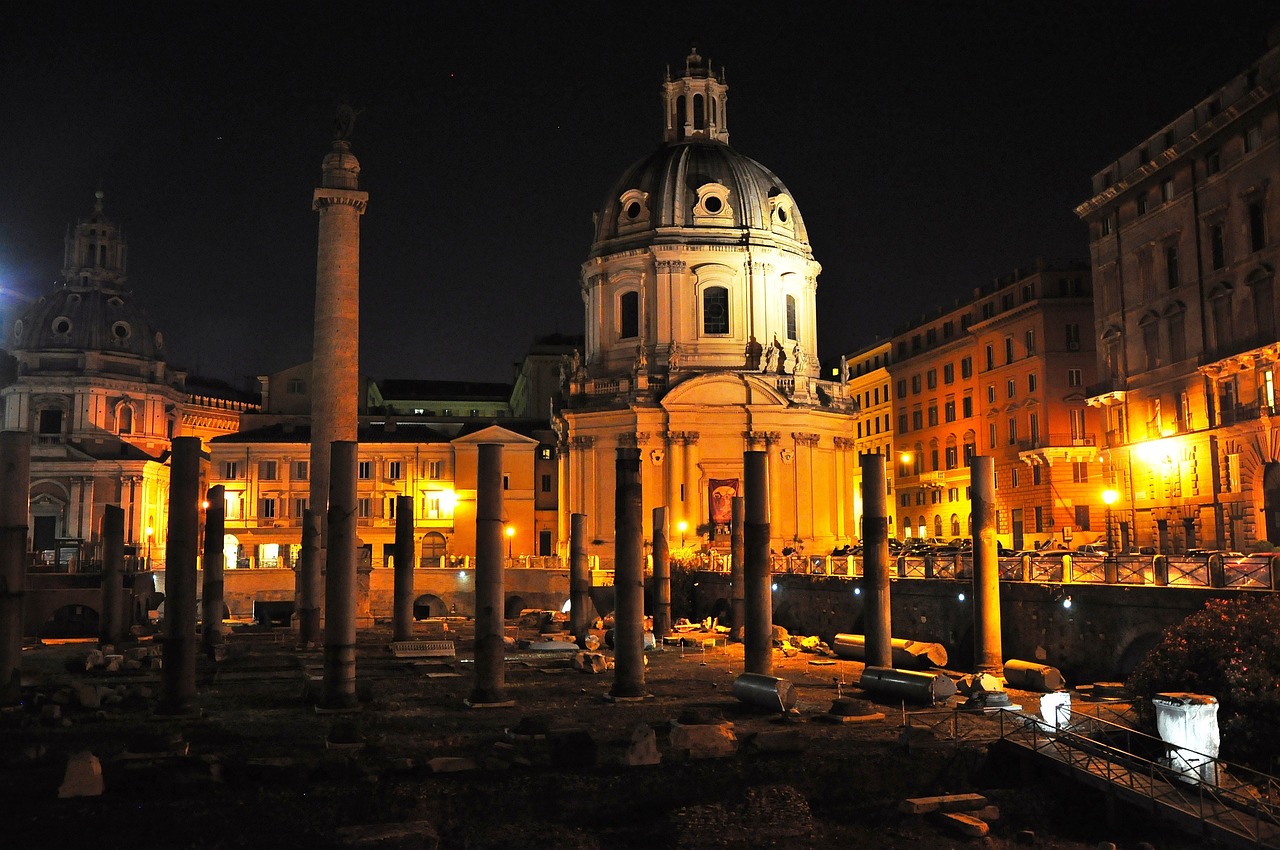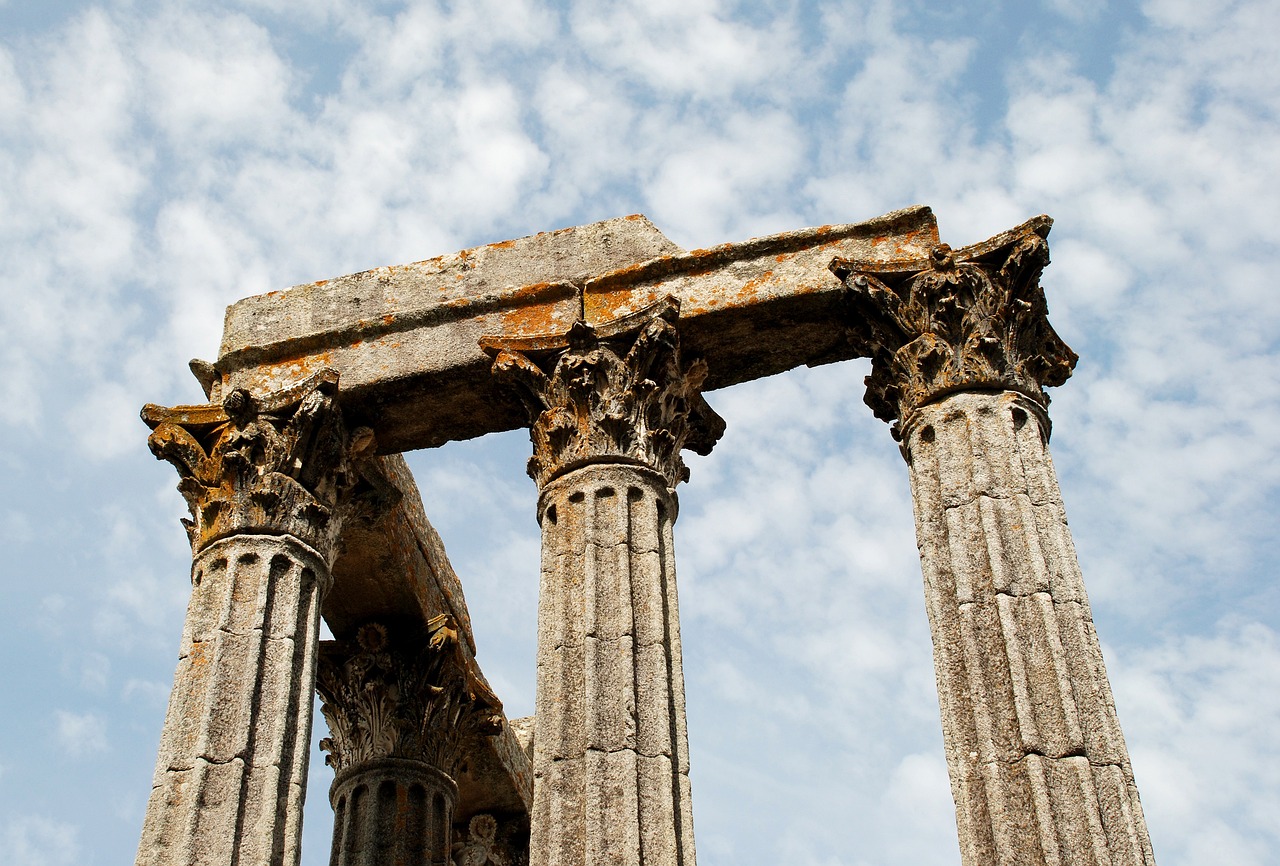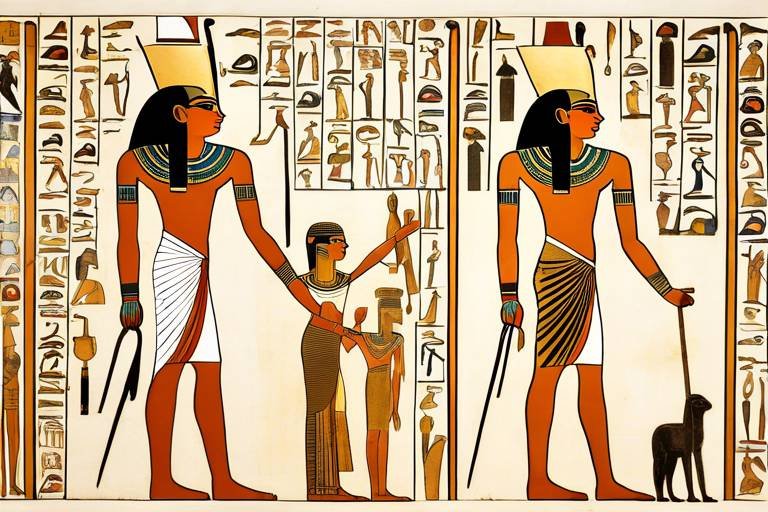The Discovery of the Ancient Sumerian Civilization's Legacy
Imagine stumbling upon a hidden treasure trove that unlocks the secrets of a civilization lost to time. This is the exhilarating journey that archaeologists and historians embark on when delving into the legacy of the ancient Sumerian civilization. The Sumerians, who thrived in Mesopotamia, present-day Iraq, are not just a chapter in history but a profound revelation of human ingenuity and innovation.
The ancient Sumerians were trailblazers in many aspects, laying the foundation for future civilizations to flourish. Their contributions span a wide array of fields, from art and architecture to literature, technology, and governance. Each discovery unravels a tapestry of knowledge that continues to astonish and captivate modern minds.
As we journey through the remnants of the Sumerian civilization, we are met with awe-inspiring ziggurats that pierce the sky, intricate cuneiform tablets that whisper tales of gods and heroes, and advanced irrigation systems that transformed barren lands into fertile oases. The Sumerians were not just builders and inventors; they were visionaries who shaped the course of human history.
Peering into the religious beliefs and practices of the Sumerians reveals a complex pantheon of deities, elaborate rituals, and majestic temples dedicated to the divine. Their reverence for the gods permeated every aspect of their lives, guiding their decisions and shaping their worldview.
Furthermore, the Sumerians were pioneers in trade and diplomacy, establishing networks that connected distant lands and facilitated the exchange of goods and ideas. Their thriving economy and strategic alliances paved the way for cultural diffusion and innovation, leaving a lasting imprint on the ancient world.
Despite the eventual decline of the Sumerian civilization, their legacy endures through archaeological discoveries that shed light on their remarkable achievements. Each artifact unearthed is a testament to their intellect, creativity, and resilience, offering a glimpse into a bygone era that continues to inspire and intrigue.
The journey of unraveling the ancient Sumerian civilization's legacy is not just a quest for knowledge but a profound exploration of human potential and resilience. It is a reminder that innovation knows no bounds and that the echoes of the past reverberate through the corridors of time, shaping our present and guiding our future.

History of the Sumerian Civilization
The history of the Sumerian civilization dates back to around 4500 BCE when the Sumerians settled in the fertile region of Mesopotamia, known as the cradle of civilization. Mesopotamia, located between the Tigris and Euphrates rivers, provided the Sumerians with fertile land for agriculture and abundant resources for development. The Sumerians were among the first to establish complex urban societies, laying the foundation for future civilizations.
One of the remarkable aspects of the Sumerian civilization was the invention of writing. The Sumerians developed the cuneiform writing system, consisting of wedge-shaped characters impressed on clay tablets. This innovation revolutionized communication and record-keeping, enabling the Sumerians to document their history, laws, and literature. The emergence of writing marked a significant milestone in the progress of human civilization.
Over time, the Sumerians formed city-states, each governed by a king who oversaw religious, political, and economic affairs. These city-states, such as Uruk, Ur, and Lagash, engaged in trade, built monumental structures like ziggurats, and developed a sophisticated system of governance. The Sumerians' organized society and advanced infrastructure set them apart as a highly influential civilization in the ancient world.
The Sumerians excelled in various fields, including mathematics, astronomy, and architecture. Their mathematical innovations, such as the development of a numerical system based on the number 60, laid the groundwork for modern mathematics. In astronomy, the Sumerians studied the movements of celestial bodies and created one of the earliest known lunar calendars. Their architectural achievements, particularly the construction of ziggurats, showcased their engineering prowess and religious devotion.
Despite facing invasions and conflicts with neighboring civilizations, the Sumerian civilization endured for centuries, leaving a lasting legacy that continues to fascinate historians and archaeologists. The legacy of the Sumerians can be seen in the legal codes they established, such as the Code of Ur-Nammu and the Code of Hammurabi, which influenced later legal systems. Additionally, their contributions to literature, religion, and urban planning have had a profound impact on subsequent cultures.
As we delve into the history of the Sumerian civilization, we uncover a rich tapestry of innovation, culture, and societal development that shaped the course of human history. The legacy of the Sumerians serves as a testament to the enduring power of ancient civilizations and their profound influence on the world we inhabit today.

Art and Architecture of the Sumerians
The art and architecture of the Sumerians stand as a testament to their advanced skills and creative spirit. One of the most iconic architectural achievements of the Sumerians is the ziggurat, a massive stepped structure that served as a temple complex. These towering ziggurats, such as the famous Ziggurat of Ur, showcased the Sumerians' architectural prowess and their dedication to religious worship.
Moreover, the Sumerians excelled in sculpture, creating intricate statues that depicted gods, rulers, and mythical creatures. These sculptures, often made of stone or clay, reflected the Sumerians' artistic finesse and attention to detail. Additionally, the Sumerians were known for their pottery, producing beautifully decorated vessels that served both practical and aesthetic purposes.
The Sumerian writing system, known as cuneiform, also played a crucial role in their artistic endeavors. This complex script was used not only for record-keeping but also for inscribing narratives and dedicatory texts on various artistic objects. The marriage of art and writing in Sumerian culture highlights their holistic approach to creativity and communication.
Furthermore, the Sumerians' artistic and architectural achievements were closely intertwined with their religious beliefs. The construction of temples and statues was often linked to religious rituals and ceremonies, emphasizing the spiritual significance of their artistic endeavors. Through their art and architecture, the Sumerians sought to honor their gods and immortalize their cultural heritage.

Writing System and Literature
The ancient Sumerians are renowned for their sophisticated writing system known as cuneiform, which consisted of wedge-shaped characters impressed on clay tablets. This intricate form of writing was used for various purposes, including administrative records, legal documents, and literary works. The Sumerians were among the first to develop a written language, allowing for the preservation of their culture and history for future generations to decipher.
Moreover, the Sumerian civilization boasts a rich tradition of literature that provides valuable insights into their beliefs, values, and daily life. Their literary works encompass a wide range of genres, from myths and epics to hymns and proverbs. One of the most famous literary compositions from ancient Sumer is the epic of Gilgamesh, a tale of heroism, friendship, and the quest for immortality that resonates across millennia.
Through the exploration of Sumerian literature, scholars have gained a deeper understanding of the cultural and spiritual beliefs of this ancient civilization. The myths and legends passed down through generations shed light on the Sumerians' worldview, their perceptions of the divine, and the moral values that guided their society. These literary treasures not only entertain but also educate, offering a window into the minds of a people who lived thousands of years ago.

Religious Beliefs and Practices
The ancient Sumerian civilization, flourishing in Mesopotamia, holds a legacy that continues to captivate historians and archaeologists alike. Let's embark on a journey to uncover the remarkable contributions and mysteries of this ancient culture.
Central to the Sumerian society were their intricate religious beliefs and practices, which shaped every aspect of their lives. The Sumerians worshipped a diverse pantheon of gods and goddesses, each associated with different aspects of nature and human endeavors. Their temples, known as ziggurats, served as sacred spaces where elaborate rituals and ceremonies took place to honor and appease the deities.
The Sumerians believed in an afterlife, where the souls of the deceased journeyed to the underworld ruled by the goddess Ereshkigal. Funerary practices were conducted with great care to ensure a smooth passage to the realm of the dead. The concept of divine intervention in human affairs was prevalent, and omens and divination played a crucial role in decision-making processes.
One of the most significant religious texts of the Sumerians is the Epic of Gilgamesh, a tale of heroism, friendship, and the quest for immortality. This epic narrative provides valuable insights into Sumerian beliefs about life, death, and the human condition. Additionally, hymns and prayers composed by the Sumerians offer a glimpse into their spiritual devotion and reverence for the divine.
Through their religious practices, the Sumerians sought to establish harmony with the gods and ensure the prosperity and well-being of their communities. The intricate rituals and mythological narratives reflected their deep-seated faith and the importance of spirituality in their daily lives.
The religious beliefs and practices of the Sumerians not only shaped their worldview but also influenced the development of subsequent Mesopotamian civilizations. The legacy of their religious traditions can be seen in the mythologies and religious practices of later cultures, highlighting the enduring impact of the ancient Sumerian civilization.
Stay tuned for answers to common questions about the ancient Sumerian civilization and its fascinating legacy.

Technological Advancements
When it comes to technological advancements, the ancient Sumerians were true pioneers, laying the foundation for many innovations that would shape the course of human history. One of their most notable contributions was the invention of the wheel, a simple yet revolutionary creation that transformed transportation and trade. The Sumerians also developed sophisticated irrigation systems, allowing them to harness the power of the Tigris and Euphrates rivers for agricultural purposes. This mastery of water management not only boosted crop yields but also paved the way for urbanization and the growth of early cities.
Furthermore, the Sumerians made significant strides in the field of mathematics, introducing concepts such as the numerical system based on the number 60. This system laid the groundwork for our modern way of counting time and measuring angles, demonstrating their advanced understanding of mathematical principles. Additionally, the Sumerians were among the first to use writing for administrative purposes, leading to the development of cuneiform script, one of the earliest known writing systems in the world.
Moreover, the Sumerians excelled in metallurgy, producing tools and weapons made from bronze, an alloy of copper and tin. This technological innovation not only improved the efficiency of their agricultural practices but also played a crucial role in their military endeavors. The Sumerians' mastery of metallurgy allowed them to create intricate jewelry and ornamental objects, showcasing their artistic skills and craftsmanship.
Overall, the technological advancements of the Sumerians were groundbreaking, setting the stage for future innovations and shaping the course of human civilization. Their ingenuity and creativity in various fields continue to inspire awe and admiration, highlighting the enduring legacy of the ancient Sumerian civilization.

Social Structure and Daily Life
The social structure and daily life of the ancient Sumerians were intricately woven into the fabric of their civilization, shaping the way they lived and interacted with one another on a daily basis. At the core of Sumerian society was a hierarchical structure that divided individuals based on their roles and responsibilities. At the pinnacle of this structure were the rulers and priests, who held significant power and influence over the populace. They were responsible for overseeing religious ceremonies, governance, and decision-making processes that impacted the entire community.
Below the ruling elite were the artisans, merchants, and farmers who formed the backbone of Sumerian society. Artisans were highly skilled craftsmen who produced intricate pottery, textiles, and jewelry, showcasing the advanced artistic abilities of the civilization. Merchants played a crucial role in facilitating trade both within Sumer and with neighboring regions, contributing to the economic prosperity of the society. Farmers, on the other hand, toiled the fertile lands of Mesopotamia, utilizing innovative irrigation systems to cultivate crops such as barley and wheat.
Family structure was paramount in Sumerian society, with households typically consisting of extended family members living together in communal settings. The family unit was central to daily life, providing support, guidance, and a sense of belonging to its members. Women played essential roles within the family, managing household affairs, raising children, and sometimes even engaging in trade and business activities.
Education and knowledge were highly valued in Sumerian culture, with scribes holding a prestigious position in society due to their ability to read, write, and keep records. Education was primarily imparted through apprenticeships, where young individuals learned various skills and crafts from experienced practitioners. This emphasis on education contributed to the intellectual advancement of the civilization and the preservation of knowledge through written records.
Religious beliefs permeated every aspect of Sumerian daily life, with rituals, ceremonies, and offerings conducted regularly to appease the gods and ensure prosperity and protection for the community. Temples served as centers of religious worship and administrative functions, where priests conducted ceremonies and maintained records of offerings and donations. The Sumerians believed in a pantheon of gods and goddesses, each governing different aspects of nature, society, and the afterlife.
In conclusion, the social structure and daily life of the ancient Sumerians were complex and multifaceted, reflecting a society that valued hierarchy, community, and cultural practices. Their innovative approaches to governance, economy, and family life laid the foundation for future civilizations and continue to intrigue researchers and historians to this day.

Trade and Diplomacy in Sumerian Civilization
Trade and diplomacy played a vital role in the flourishing civilization of ancient Sumer. The Sumerians were renowned traders who engaged in extensive commercial activities with neighboring regions, fostering economic prosperity and cultural exchange. Their strategic location in Mesopotamia, between the Tigris and Euphrates rivers, facilitated trade routes that connected distant lands and facilitated the exchange of goods and ideas.
One of the key commodities in Sumerian trade was grain, a valuable resource in the fertile region. The surplus agricultural produce enabled the Sumerians to establish trade networks with regions lacking in such abundance, creating a system of barter and commerce that enriched their society. Through trade, the Sumerians acquired precious metals, timber, and luxury goods, enhancing their material wealth and cultural sophistication.
Moreover, diplomacy played a crucial role in maintaining peaceful relations and fostering alliances with neighboring city-states. The Sumerians engaged in diplomatic missions to establish treaties, resolve disputes, and strengthen political ties with other civilizations. These diplomatic efforts helped in promoting stability, facilitating trade agreements, and ensuring mutual cooperation for the prosperity of the region.
The Sumerian civilization's diplomatic engagements extended beyond mere political alliances to cultural exchanges and knowledge sharing. Through diplomatic interactions, the Sumerians acquired new technologies, artistic techniques, and religious practices from other civilizations, enriching their own cultural heritage and expanding their intellectual horizons.
Overall, trade and diplomacy were integral components of the Sumerian civilization, contributing to its economic prosperity, cultural diversity, and geopolitical influence in the ancient world. The legacy of Sumerian trade routes and diplomatic relations continues to be studied by archaeologists and historians, shedding light on the interconnectedness of early human societies and the importance of peaceful interactions for societal advancement.

Decline and Legacy of the Sumerian Civilization
As we delve into the decline and legacy of the ancient Sumerian civilization, we uncover a fascinating journey of rise and fall that left a profound impact on the course of history. The Sumerians, once flourishing in the fertile lands of Mesopotamia, faced various challenges that eventually led to their decline.
One of the significant factors contributing to the decline of the Sumerian civilization was the constant conflicts and invasions from neighboring regions. The Sumerians found themselves in a vulnerable position as they struggled to defend their territories against external threats, which weakened their once mighty empire.
Additionally, internal strife and power struggles among the city-states of Sumer further destabilized the region. The lack of unity and cooperation among the Sumerian cities hindered their ability to confront common challenges and threats, ultimately leading to their downfall.
Despite the decline of their civilization, the legacy of the Sumerians endured through their remarkable contributions to various fields. The Sumerians laid the foundation for many aspects of modern society, including the development of written laws and legal systems that influenced civilizations to come.
Furthermore, the Sumerians' advancements in literature, such as the epic of Gilgamesh, and their innovative architectural designs, like the ziggurats, continue to inspire and captivate scholars and enthusiasts alike. The legacy of the Sumerian civilization lives on through the echoes of their culture in the realms of art, literature, and governance.
Archaeological excavations and ongoing research efforts shed light on the intricate details of Sumerian life and provide valuable insights into their societal structure and beliefs. The legacy of the Sumerians serves as a testament to the enduring impact of ancient civilizations on the tapestry of human history.

Archaeological Discoveries and Research
Archaeological discoveries and research have played a crucial role in unraveling the mysteries of the ancient Sumerian civilization. Through meticulous excavations and analysis of artifacts, archaeologists have unearthed a wealth of information that sheds light on the daily life, beliefs, and achievements of the Sumerians. These findings have not only expanded our knowledge of this early civilization but have also deepened our understanding of the development of human society.
One of the most significant archaeological discoveries related to the Sumerians is the uncovering of their elaborate city-states, such as Ur, Uruk, and Eridu. These ancient urban centers have provided valuable insights into the urban planning, architecture, and social organization of the Sumerian society. The remains of monumental structures like ziggurats and temples stand as testaments to their advanced engineering skills and religious practices.
Furthermore, the discovery of cuneiform tablets has been instrumental in deciphering the Sumerian writing system and unlocking a treasure trove of literary works. These clay tablets contain myths, epics, and administrative documents that offer a glimpse into the cultural, religious, and economic aspects of Sumerian life. The Epic of Gilgamesh, for instance, is a renowned Sumerian literary masterpiece that continues to captivate readers worldwide.
In addition to textual evidence, archaeological excavations have also revealed intricate artwork, such as finely crafted sculptures and intricately decorated pottery. These artistic expressions not only showcase the Sumerians' aesthetic sensibilities but also provide clues about their religious beliefs, rituals, and daily life.
Moreover, ongoing research continues to expand our understanding of Sumerian technological innovations, including advancements in irrigation systems, metallurgy, and trade networks. By studying ancient artifacts, tools, and infrastructure, archaeologists are piecing together the technological prowess of the Sumerians and their contributions to the development of early civilizations.
Overall, archaeological discoveries and research have been instrumental in reconstructing the story of the ancient Sumerian civilization. By combining archaeological evidence with historical texts and scientific analysis, researchers are able to paint a vivid picture of a civilization that laid the foundation for subsequent societies and left a lasting legacy in various fields.
Frequently Asked Questions
- What was the significance of the Sumerian civilization?
The Sumerian civilization was one of the earliest known civilizations in human history, flourishing in Mesopotamia and making significant contributions to various fields such as art, architecture, writing, and technology. Their innovations laid the foundation for future societies and influenced the development of ancient cultures.
- How did the Sumerians communicate?
The Sumerians developed a complex writing system known as cuneiform, which involved using wedge-shaped characters on clay tablets. This writing system was used for various purposes, including recording transactions, documenting laws, and preserving literature, providing valuable insights into their society and culture.
- What were the religious beliefs of the Sumerians?
The Sumerians had a polytheistic belief system with a pantheon of gods and goddesses who controlled different aspects of life. They built temples, conducted rituals, and believed in an afterlife. Their religious practices played a significant role in shaping their worldview and societal structure.
- What are some notable archaeological discoveries related to the Sumerian civilization?
Archaeologists have unearthed various artifacts and structures from Sumerian sites, including the city of Ur and the ziggurat of Ur. These discoveries have provided valuable information about Sumerian daily life, architecture, and religious practices, shedding light on this ancient civilization.



















